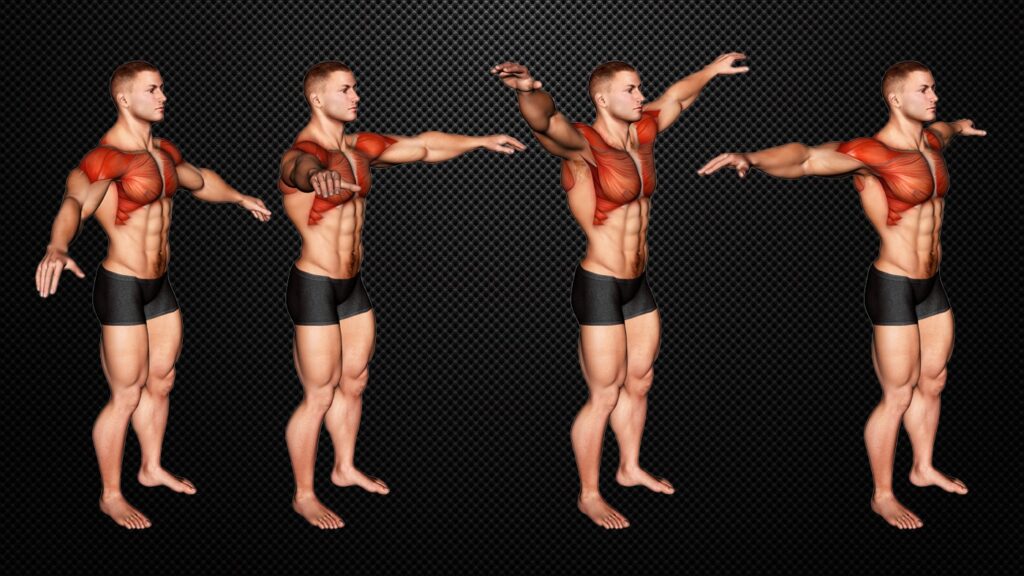Explain Why Head Circles and Arm Circles are considered Dangerous Exercises

Head Circles and Arm Circles: Debunking the Myths and Finding Safer Alternatives
In the world of fitness, there’s a constant influx of information, with some exercises touted as wonder cures and others demonized as dangerous. Head circles and arm circles have found themselves on the receiving end of some negativity, leaving many wondering if they should be avoided altogether. This article dives deep into the potential risks associated with these movements, explores safer alternatives, and ultimately empowers you to make informed choices about your workout routine.
Why Head Circles Might Not Be Your Best Bet
While head circles might feel like a great way to loosen a stiff neck, research suggests they might not be the most beneficial or, in some cases, the safest option. Here’s a breakdown of the potential drawbacks:
-
Stress on the Cervical Spine: The cervical spine, located in your neck, is a delicate structure composed of vertebrae, discs, and ligaments. Head circles, especially forceful or rapid ones, can put undue stress on these structures, potentially leading to pain, inflammation, or even dizziness.
-
Risk of Injury: The neck houses various nerves and blood vessels. Improper head circles can irritate these structures, increasing the risk of headaches or even nerve impingement.
-
Limited Effectiveness: The effectiveness of head circles in improving neck mobility is debatable. Studies suggest more targeted stretches or gentle neck rolls might be more beneficial.
Head Circle Alternatives: Gentle Movements for a Happy Neck
If you’re looking to loosen up your neck and improve mobility, here are some safer and potentially more effective alternatives to head circles:
-
Neck Side Bends: Slowly tilt your head towards one shoulder, bringing your ear closer to it. Hold for 10-15 seconds and repeat on the other side. Perform 2-3 sets of 10 repetitions on each side.
-
Chin Tucks: Gently tuck your chin towards your chest, creating a slight double chin. Hold for 10-15 seconds and relax. Repeat 2-3 sets of 10 repetitions.
-
Isometric Neck Rotations: Slowly turn your head as far as comfortably possible to one side, keeping your gaze fixed on a point behind you. Hold for 10-15 seconds and repeat on the other side. Perform 2-3 sets of 10 repetitions on each side.
-
Proprioceptive Neuromuscular Facilitation (PNF) Techniques: These techniques involve gentle stretches with isometric holds under the guidance of a qualified physical therapist.
Remember: When performing any neck stretches, prioritize slow, controlled movements and stop if you experience any pain.
Arm Circles: Are They Friend or Foe?
Arm circles are often included in warm-up routines, but their effectiveness and potential risks warrant a closer look.
-
Limited Warm-Up Benefits: Research suggests static stretches like arm circles might not be the most effective way to prepare muscles for exercise. They might even decrease muscle performance.
-
Risk of Joint Strain: Forceful or repetitive arm circles can put stress on the shoulder joint, particularly if you have pre-existing shoulder issues.
Safer Warm-Up Options for Your Arms
Here are some alternative warm-up exercises to get your arms primed for your workout:
-
Arm Swings: Stand with your feet shoulder-width apart and let your arms hang loosely by your sides. Gently swing your arms forward and backward in small circles, gradually increasing the range of motion as you feel warm.
-
Arm Circles (Modified): Contrary to the name, these circles are more about gentle arm movements. Raise your arms out to the sides at shoulder height and perform small forward and backward circles with minimal force.
-
Shoulder Rolls: Roll your shoulders forward in a circular motion 10 times, then reverse direction and roll backward 10 times. Repeat 2-3 sets.
-
Arm Pendulums: Stand with your feet shoulder-width apart and let your arms hang loosely by your sides. Gently sway your body back and forth, allowing your arms to swing naturally like pendulums.
Remember: Focus on smooth, controlled movements during your warm-up. Listen to your body and avoid any exercises that cause pain.
The Importance of Proper Form and Listening to Your Body
Regardless of the exercise, proper form is paramount for safety and effectiveness. It’s always wise to consult a qualified fitness professional or physical therapist to learn proper technique, especially for exercises targeting the neck. Additionally, pay close attention to your body’s signals. If you experience any pain or discomfort during head circles, arm circles, or any other exercise, stop immediately and consult a healthcare professional.
Building a Dynamic Warm-Up
An effective warm-up prepares your body for exercise by increasing blood flow, elevating muscle temperature, and improving range of motion. Here are some dynamic warm-up exercises that incorporate movement and can be tailored to your specific workout:
-
Arm Circles (Modified – Revisited): As mentioned earlier, small, controlled arm circles can be a safe and effective way to engage your shoulders. You can progress this exercise by incorporating arm circles with shoulder shrugs. Raise your shoulders towards your ears as you perform small forward circles, then lower them down as you switch to backward circles.
-
Inchworms: Stand tall with your feet hip-width apart. Slowly hinge at your hips and walk your hands forward on the floor until your body forms a straight line from head to heels. Hold for a moment, then walk your hands back to the starting position while maintaining a flat back. Repeat for 8-12 repetitions.
-
Arm Circles with Lunges: Combine arm circles with lunges for a dynamic warm-up that targets both your upper and lower body. Take a lunge forward, lowering your back knee towards the ground. Perform small forward circles with your arms as you hold the lunge for a few seconds. Repeat on the other side, alternating arm circle directions. Perform 2-3 sets of 8-12 repetitions on each leg.
Moving Beyond the Warm-Up: Exercises for Neck and Shoulder Mobility
While head circles and arm circles might not be ideal for everyone, incorporating exercises that target neck and shoulder mobility is crucial for overall movement health. Here are some options:
-
Neck Retractions: Gently tuck your chin towards your chest, creating a slight double chin. Hold for a few seconds, then slowly return to the starting position. Repeat 10-15 times.
-
Scapular Squeezes: Stand tall with your shoulders relaxed. Squeeze your shoulder blades together and hold for a few seconds. Relax and repeat 10-15 times.
-
Cat-Cow Stretches: Get on all fours with your hands shoulder-width apart and knees hip-width apart. As you inhale, arch your back and look up (cow pose). As you exhale, round your back and tuck your chin towards your chest (cat pose). Repeat for 10-12 repetitions.
-
Doorway Shoulder Stretch: Stand in a doorway and place your forearms on either side of the doorframe. Lean forward gently, feeling a stretch in your chest and shoulders. Hold for 15-30 seconds and repeat 2-3 times.
The Takeaway: Prioritize Quality Movement Over Quantity
Focus on exercises that promote proper movement mechanics and target specific muscle groups for efficient activation. Don’t be afraid to experiment with different exercises and find what works best for your body. Here are some additional tips:
-
Start Slowly: When incorporating new exercises, begin with a low number of repetitions and gradually increase as your mobility and strength improve.
-
Maintain Proper Form: Prioritize proper form over speed or weight. It’s better to perform an exercise correctly with less weight than to risk injury with improper form.
-
Listen to Your Body: Pay close attention to any pain signals. If you experience discomfort, stop the exercise and consult a healthcare professional.



